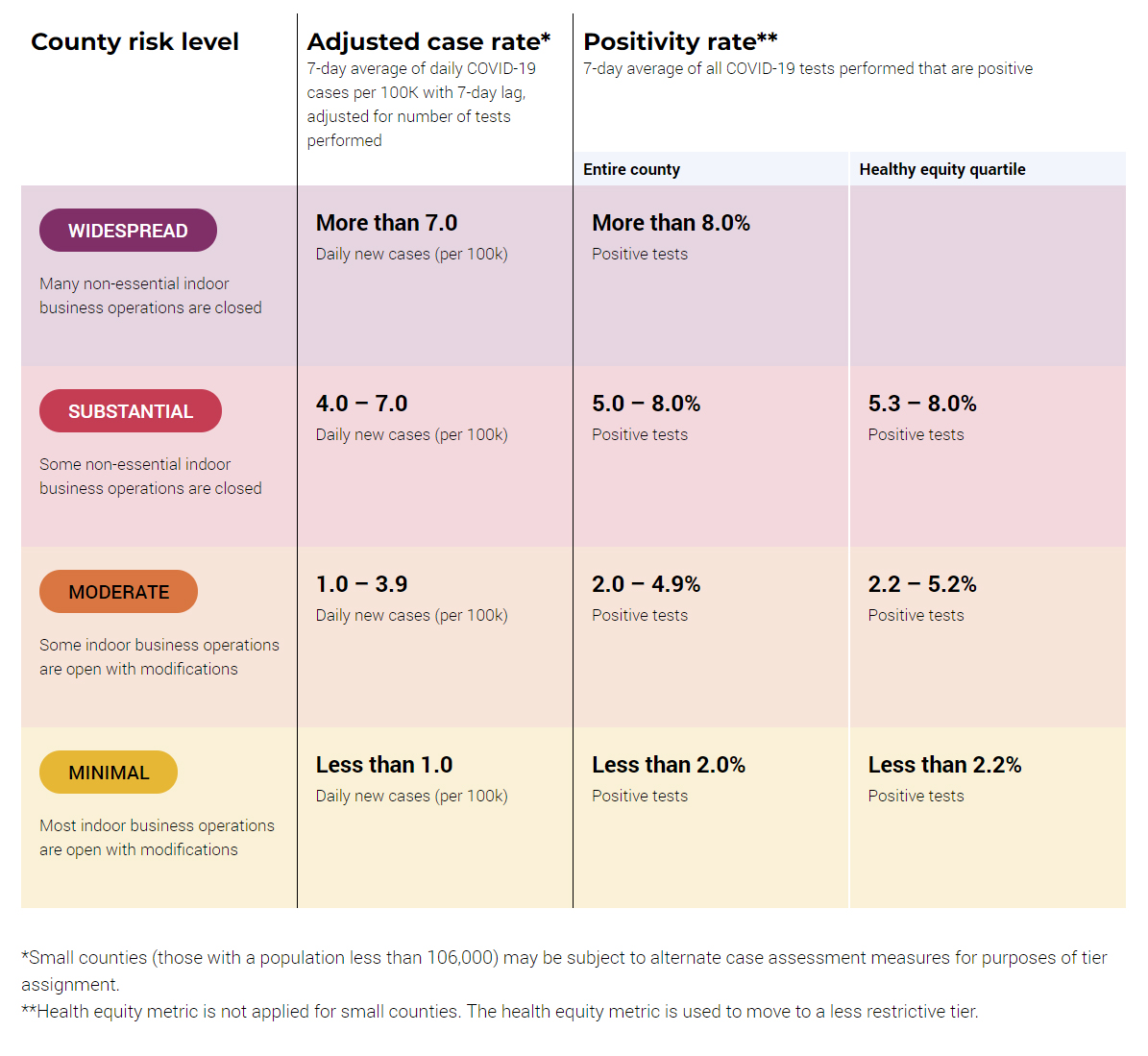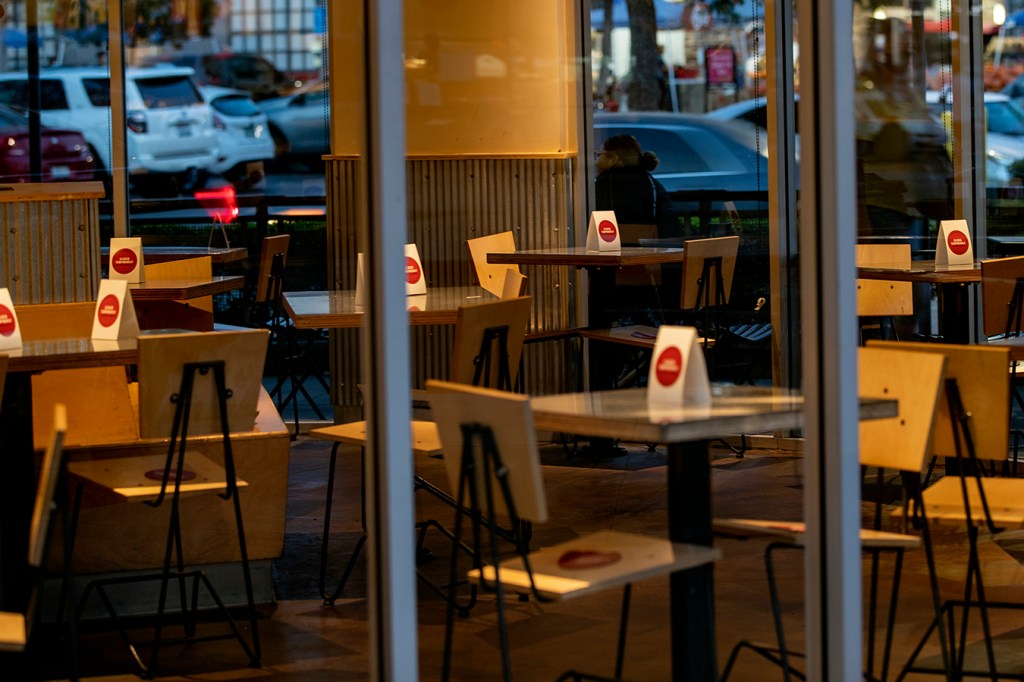SANTA CRUZ, Calif. — For Tom Davis, being told by the state this week that he must close his Pacific Edge Climbing Gym for the third time in six months is beyond frustrating. The first time the rock-climbing gym and fitness center shut down, co-owners Davis and Diane Russell took out a government loan to pay employees. The second time, they were forced to lay everyone off — themselves included. Now, as they face another surge of COVID cases across California, he fears he may lose the business for good.
California’s ping-ponging approach to managing the virus — twice reopening large portions of the service-sector economy only to shut them again — doesn’t seem just or reasonable, Davis said. As of Tuesday evening, he was planning to defy the order, keeping the gym open but with additional restrictions on capacity.
“The government is essentially saying, ‘We’re just picking you to personally go bankrupt and all the people who work with you,’” said Davis. “Nobody can afford to live in Santa Cruz on unemployment.”
It’s a grim time in the pandemic. California has surpassed 1 million cases of COVID-19 and 94% of Californians — more than 37.7 million people — live in a county considered to have “widespread” infection. Santa Cruz is one of 41 California counties now under the most restrictive orders in the state’s four-tiered COVID blueprint for determining which businesses can stay open amid the pandemic, and under what proscriptions.

Until Monday, Santa Cruz was in the red tier — the second-most restrictive — meaning Pacific Edge could be open at 10% capacity. Now, its owners are being told to close entirely.
For business owners and workers, a backward slide on the blueprint represents yet another financial setback in a bleak year, leaving some residents angry, exasperated and wondering if this is really the best the state can do.
It’s a question reverberating nationwide as every state experiences a deadly rise in COVID cases and a growing number of hospitals say they are simply out of beds. Among states, California is performing relatively well, ranking 40th in cases per capita and 33rd in deaths, according to a New York Times tracker.
But even here, the virus is too pervasive in its spread — and the public health infrastructure too enfeebled — to make the reopening of businesses and schools an easy proposition. Some experts say that during a pandemic, when the virus is everywhere, the push and pull California businesses are enduring may be what success looks like in much of the U.S. for months to come.
“The yo-yo nature of this is a feature of the pandemic,” said Dr. Ashish Jha, dean of the School of Public Health at Brown University. “And in fact, when I look at really successful countries like South Korea, Taiwan and New Zealand, they all have a yo-yo feeling to them.”
Experts say a crucial factor in being able to reopen safely is getting cases low enough that time-tested public health tools like quarantines and contact tracing can work. Most U.S. hot spots, including broad swaths of California, have never achieved those low levels.
In California, Gov. Gavin Newsom, like many other governors, is trying to thread the needle, to keep cases to a minimum while also allowing many businesses to remain open. It’s a sensitive equation, said Dr. Aimee Sisson, public health officer for Yolo County.
“It’s really hard to dial in the balances of getting our economy going again, which is important for public health, and maintaining our health, which is important for the economy.”
And while California is doing better than many other states, said Cameron Kaiser, the health officer for Riverside County, it’s certainly not cause for celebration. “At this point we’re clearly doing better, but our trends are not good either. When you’re talking about the relative impact of different tragedies, I’m not sure you’d call that a success.”
Even as it frustrates some residents, California’s tiered reopening system has won praise nationally. The system draws on three COVID metrics to guide restrictions: new cases per population; the share of people tested for the coronavirus who are positive; and, in larger counties, an equity measure to ensure cases are low across the county, including in high-risk communities. Under revised guidelines released this week, county tier assignments can change from week to week — and more than once a week if data indicates a county is losing ground.
“We think it’s a best practice nationally and globally,” said Dr. Tom Frieden, a former director of the Centers for Disease Control and Prevention. “This is not about closure — this is about adjusting what is open when.”
Still, the state blueprint isn’t perfect, health officers say. In its early stages, there were inconsistencies around which businesses could stay open. For example, nail salons were treated differently from hair salons, though the exposure conditions are fairly similar. The state has taken feedback, said Sisson, and tried to make improvements.
And perhaps the biggest weakness is how little data exists to determine which businesses present the greatest risks for exposure and transmission, said Sisson and other health officers. While restaurants and bars are broadly considered high-risk because people remove their masks while eating and drinking, not much is known about viral spread at places like gyms and movie theaters, where it’s possible to reduce occupancy and wear masks.
That’s part of what frustrates Davis in Santa Cruz. Pacific Edge has reduced occupancy to just 30 people in the sprawling old factory building and instituted a range of protective measures. “Compare that to Costco. I honestly believe we are just as safe if not safer than other businesses,” Davis said.
Measuring California’s success in navigating the pandemic depends on what your goal is, said Marm Kilpatrick, an infectious disease researcher at the University of California-Santa Cruz who has been advising local government and businesses, including Pacific Edge, on reopening. The state has prioritized both keeping businesses open and keeping cases down, which means neither can be done perfectly.
Still, he’s not sure the whiplash of openings and closings is the best the state can do. He worries the tiered system may inadvertently send the wrong signals: Again and again, public health officials have watched in dismay as residents whose counties move into less-restrictive tiers revert to socializing in large groups and shedding basic safety protocols like masks and social distancing — followed by a dangerous upsurge in infections and hospitalizations.
Dr. Mark Ghaly, the state’s Health and Human Services secretary, has acknowledged as much, stressing that cases are linked to both social gatherings and businesses. Ultimately, he said on Monday, the state is taking a “dual approach” that includes changes to business practices, and asking individuals to be disciplined in wearing masks outside the home, regularly sanitizing hands, staying 6 feet apart, and socializing outdoors and in small gatherings.
Meanwhile, the holiday season looms. The most recent spike in cases directly correlates to Halloween, several health officers said, just as previous spikes were linked to Memorial Day, the Fourth of July and Labor Day. With Thanksgiving, Christmas and New Year’s on the horizon, officials wonder whether they might have to recommend a farther-reaching stay-at-home order to keep cases under control.
“I’m very worried about Thanksgiving,” said Dr. Chris Farnitano, health officer for Contra Costa County. “The tradition of so many families is to get together with their extended families, and that means gatherings with groups of people, and that’s where the virus wants to spread.”
In addition, Farnitano said, given the realities of commerce and travel, what happens in other states affects California. “Having other states with the same restrictions would help California,” he said.
What’s really needed, several public health officials said, is a coordinated national message and strategy.
“I’m hoping we’re gonna have the new president come in and take the reins very firmly,” said Steffanie Strathdee, associate dean of global health at UC-San Diego. “He has the right people around him advising him. But, by then, winter will be half over and we’re going to be facing 400,000 deaths. Digging ourselves out of that mess is going to take awhile.”
This story was produced by KHN (Kaiser Health News), a national newsroom that produces in-depth journalism about health issues. Together with Policy Analysis and Polling, KHN is one of the three major operating programs at KFF (Kaiser Family Foundation). KFF is an endowed nonprofit organization providing information on health issues to the nation.



